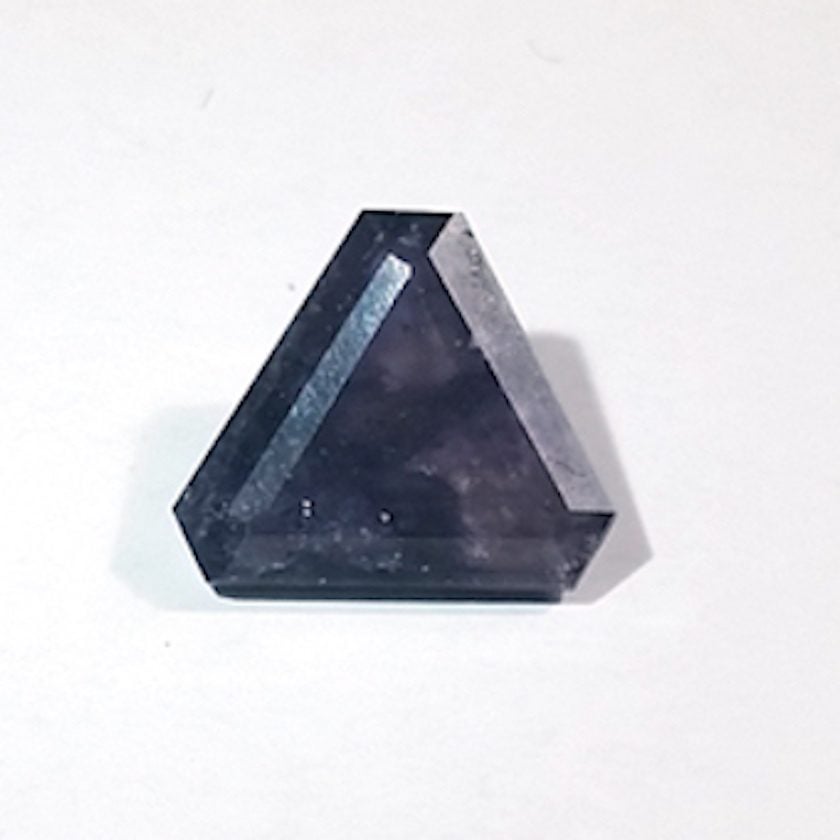Chambersite Value, Price, and Jewelry Information
Chambersite is an exceedingly rare mineral. Although it has properties suitable for jewelry use, its crystals occur in very small sizes. Few cut specimens of this colorless, brownish, or purple stone exist.
2 Minute Read
Chambersite is an exceedingly rare mineral. Although it has properties suitable for jewelry use, its crystals occur in very small sizes. Few cut specimens of this colorless, brownish, or purple stone exist.
Start an IGS Membership today
for full access to our price guide (updated monthly).Chambersite Value
What is Chambersite?
Chambersite comprises the manganese (Mn)-dominant member of the boracite group of minerals. Other members include the magnesium (Mg)-rich boracite and the iron (Fe)-rich ericaite.
Theses stones were first discovered in brines in a gas storage well at Barber's Hill Salt Dome in Chambers County, Texas. Recovering these crystals requires skin diving in brine down to depths of as much as 70'.
Does Chambersite Make a Good Jewelry Stone?
With a hardness of 7, chambersite matches quartz in terms of resistance to scratching. With a vitreous luster and no cleavage, chambersites would make wonderful and durable jewelry stones. However, you're more likely to find them in a mineral collection, if at all, than in a jewelry collection. Cut chambersites would be very small and are seldom transparent.
Chambersites do have one weakness as a jewelry stone: their colors darken when exposed to sunlight, a phenomenon called tenebrescence. Always store them away from sunlight and reserve any jewelry for evening wear.
How to Identify Chambersites
Orthorhombic chambersite almost always occurs in very tiny, tetrahedral crystals. This typically isometric shape reveals chambersites initially form at a higher temperature as isometric crystals. When they cool, their atoms reorganize into an orthorhombic symmetry.
In fact, due to their triangular pyramid shape, chambersites typically receive triangular cuts when faceted. Faceters bevel and polish off part of the tetrahedron to save the weight of this rare material. Essentially, cut chambersites are truncated crystals with polished surfaces.
Small crystals may be transparent and usually brownish or lilac to purple. However, faceted pieces are usually not transparent. Colorless gems also occur.
When backlit, this gemmy chambersite from the type locality shows its translucency. At 0.8 x 0.8 x 0.8 cm, it's also unusually large for this species. © Rob Lavinsky, www.iRocks.com. Used with permission.
Common Misidentifications
Colorless chambersites can be distinguished from their colorless boracite brethren by their optical properties and specific gravity. Boracites also luminesce while chambersites don't.
Although chambersites are quite rare, charoite and sugilite, two purple and opaque-to-translucent gem materials, have recently gained popularity and have some resemblance to chambersite. However, both of these gems have lower hardness and specific gravity values. Chambersites also lack the distinctive swirl patterns of charoites.
Are There Synthetic Chambersites?
Scientists have hydrothermally synthesized chambersite crystals for geological research. Since natural chambersites are multiferroic, synthetics may prove useful for research into electronic or optical devices. However, there is no known use of this material for jewelry.
There are no known gemstone treatments for chambersites.
Where are Chambersites Found?
The type locality at Chambers County, Texas and the Venice Salt Dome in Plaquemines Parish, Louisiana produce gem-quality crystals. Nova Scotia and New Brunswick, Canada also produce crystals. In 1971, chambersite as an ore was discovered at the Dongshuichang deposit near Jixian, Tianjin City, China.
In 2002, a study of rhodizite-londonite gems from Madagascar found that a specimen contained inclusions of colorless chambersites. What makes this occurrence so unusual is that it marks the first appearance of chambersites in a granitic pegmatite environment.
Stone Sizes
Cut chambersites usually weigh less than 2 carats.
How to Care for Chambersites
This material requires no special care, except to store it away from sunlight and reserve it for evening wear. For cleaning recommendations, consult our gemstone jewelry cleaning guide.
Joel E. Arem, Ph.D., FGA
Dr. Joel E. Arem has more than 60 years of experience in the world of gems and minerals. After obtaining his Ph.D. in Mineralogy from Harvard University, he has published numerous books that are still among the most widely used references and guidebooks on crystals, gems and minerals in the world.
Co-founder and President of numerous organizations, Dr. Arem has enjoyed a lifelong career in mineralogy and gemology. He has been a Smithsonian scientist and Curator, a consultant to many well-known companies and institutions, and a prolific author and speaker. Although his main activities have been as a gem cutter and dealer, his focus has always been education. joelarem.com
International Gem Society
Related Articles
Black Diamond Value, Price, and Jewelry Information
Chameleon Diamond Value, Price, and Jewelry Information
Gray Diamond Value, Price, and Jewelry Information
Green Diamond Value, Price, and Jewelry Information
Latest Articles
800 Years of Mogok: A Celebration in Tenuous Times
What is the Average Gemstone Faceting Yield?
Pyroxmangite Value, Price, and Jewelry Information
How to Identify Emerald Simulants and Synthetics
Never Stop Learning
When you join the IGS community, you get trusted diamond & gemstone information when you need it.
Get Gemology Insights
Get started with the International Gem Society’s free guide to gemstone identification. Join our weekly newsletter & get a free copy of the Gem ID Checklist!
